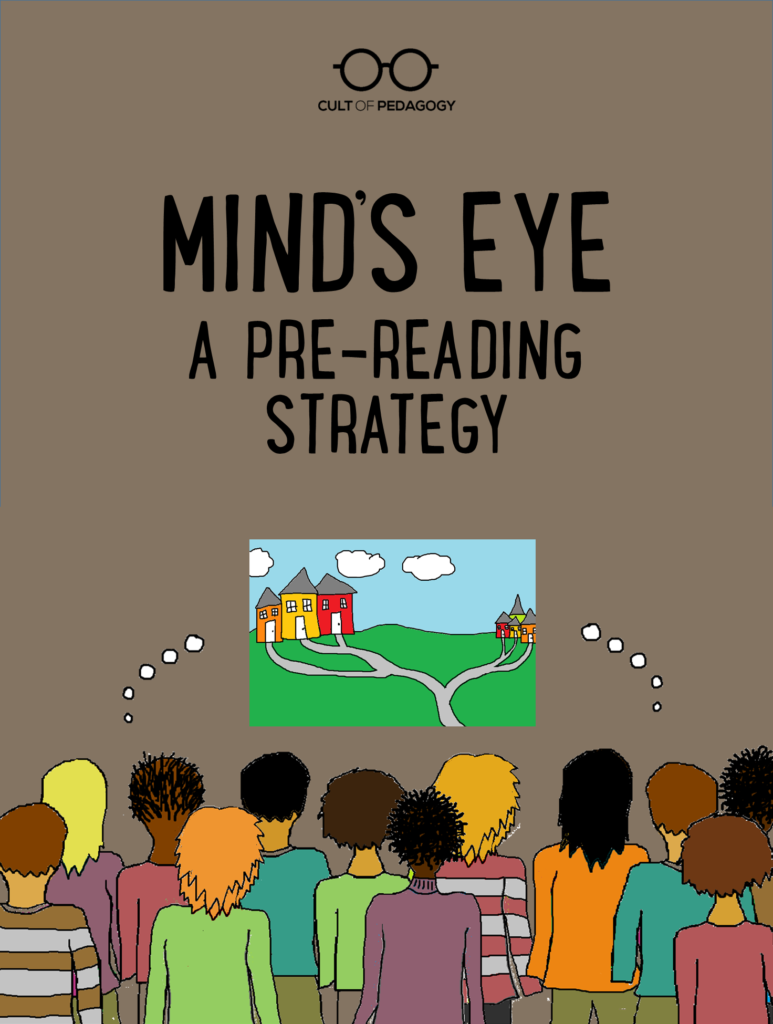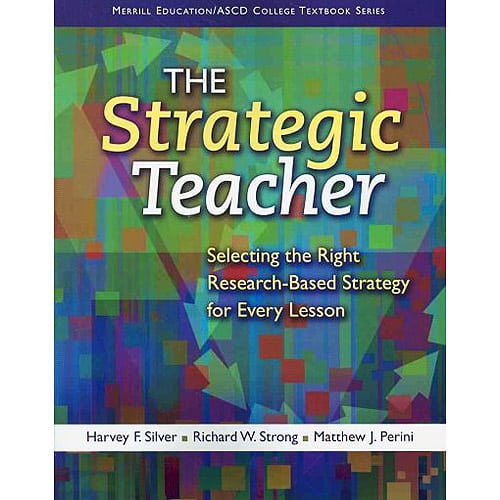Mind’s Eye: A Pre-Reading Strategy

This pre-reading lesson is EASY to prepare and results in a richer text experience for students.
Some texts are just hard for students to get into. A certain book, article or chapter might contain the most incredible details, things that would make strong, long-lasting impressions on your students, but if they can’t sink their teeth in from the beginning, they may never get to those details.
The Mind’s Eye strategy tackles that problem head on: It grabs students’ attention before they ever read a single word and creates a mystery that can only be solved by reading the text.
Very briefly, the strategy goes like this: The teacher chooses 20-30 important words from the text. Before students do any reading at all, the teacher reads the words aloud to students — slowly, pausing in between words. As they listen, students form mental pictures, predicting what the text will be about. Then they read the text and compare it to their predictions.
Here’s the strategy in more detail:
The Research
This strategy is based on the principle of dual coding, the idea that people learn better when they process information through multiple channels — both language and images. It’s the same idea behind nonlinguistic representation, which we talked about in a previous post. Readers who construct mental images as they read do a better job of making meaning, but that skill doesn’t have to come along through luck; it can be taught. The Mind’s Eye strategy is one way to do that.
Good for Many Ages, Many Content Areas
Mind’s Eye can be used to prepare students for reading all kinds of texts. It would certainly work for challenging literature in the older grades, but also to prime younger students who are just starting to read chapter books. It would work beautifully at the start of a social studies unit or before students delve into a science article. As new standards place more emphasis on non-fiction and informational reading, a strategy like Mind’s Eye can help students experience these less “entertaining” texts more fully.
Where to Find Other Strategies Like This

Mind’s Eye is one of twenty research-based strategies outlined in Silver, Strong, and Perini’s excellent book, The Strategic Teacher: Selecting the Right Research-Based Strategy for Every Lesson
. [Note: This is an Amazon Affiliate link: If you go to Amazon through this link, I will receive a small commission on that purchase.] The Mind’s Eye chapter also describes three variations on this strategy — one that even shows how to use it with math. We have already studied two other strategies from this book: Concept Attainment and Reciprocal Learning. Because the book is such a solid collection, we’ll continue to explore more over time. For now, if you’re looking for something easy and fresh, give Mind’s Eye a try. ♦
If this one spoke to you, I’d love to have you come back for more. Join my mailing list and get weekly tips, tools, and inspiration — in quick, bite-sized packages — all geared toward making your teaching more effective and joyful. To thank you, I’ll send you a free copy of my new e-booklet, 20 Ways to Cut Your Grading Time in Half. I look forward to getting to know you better!